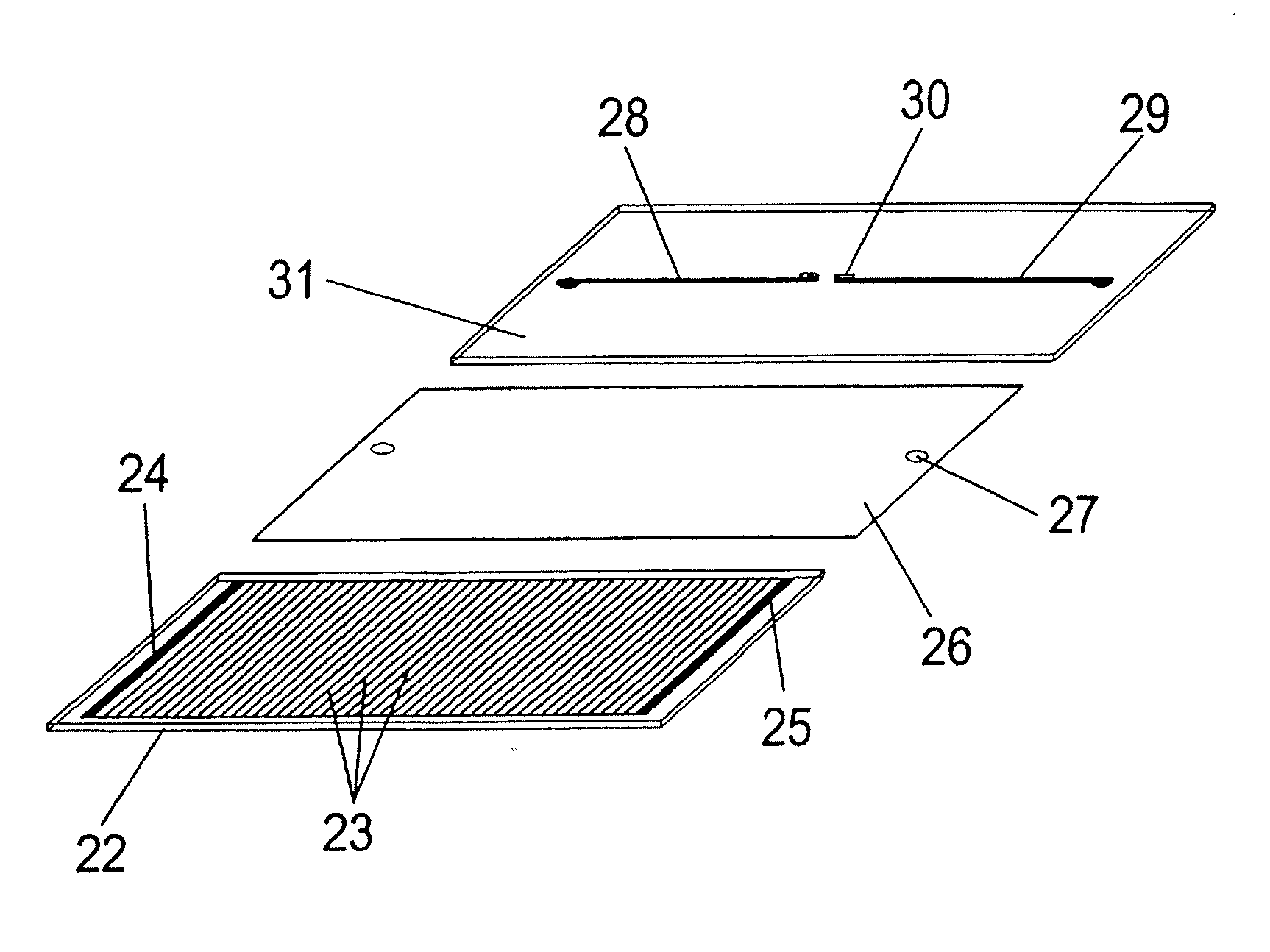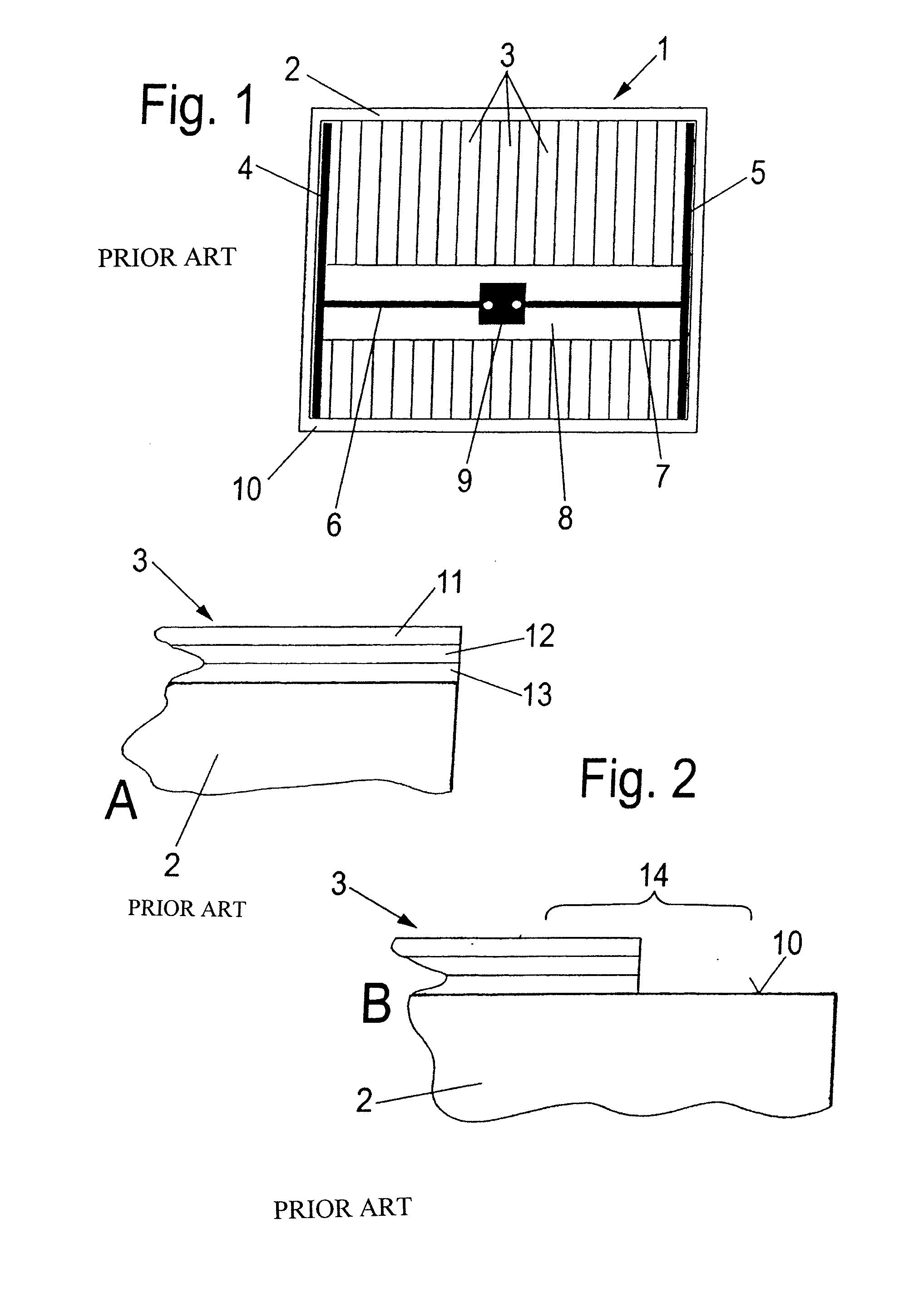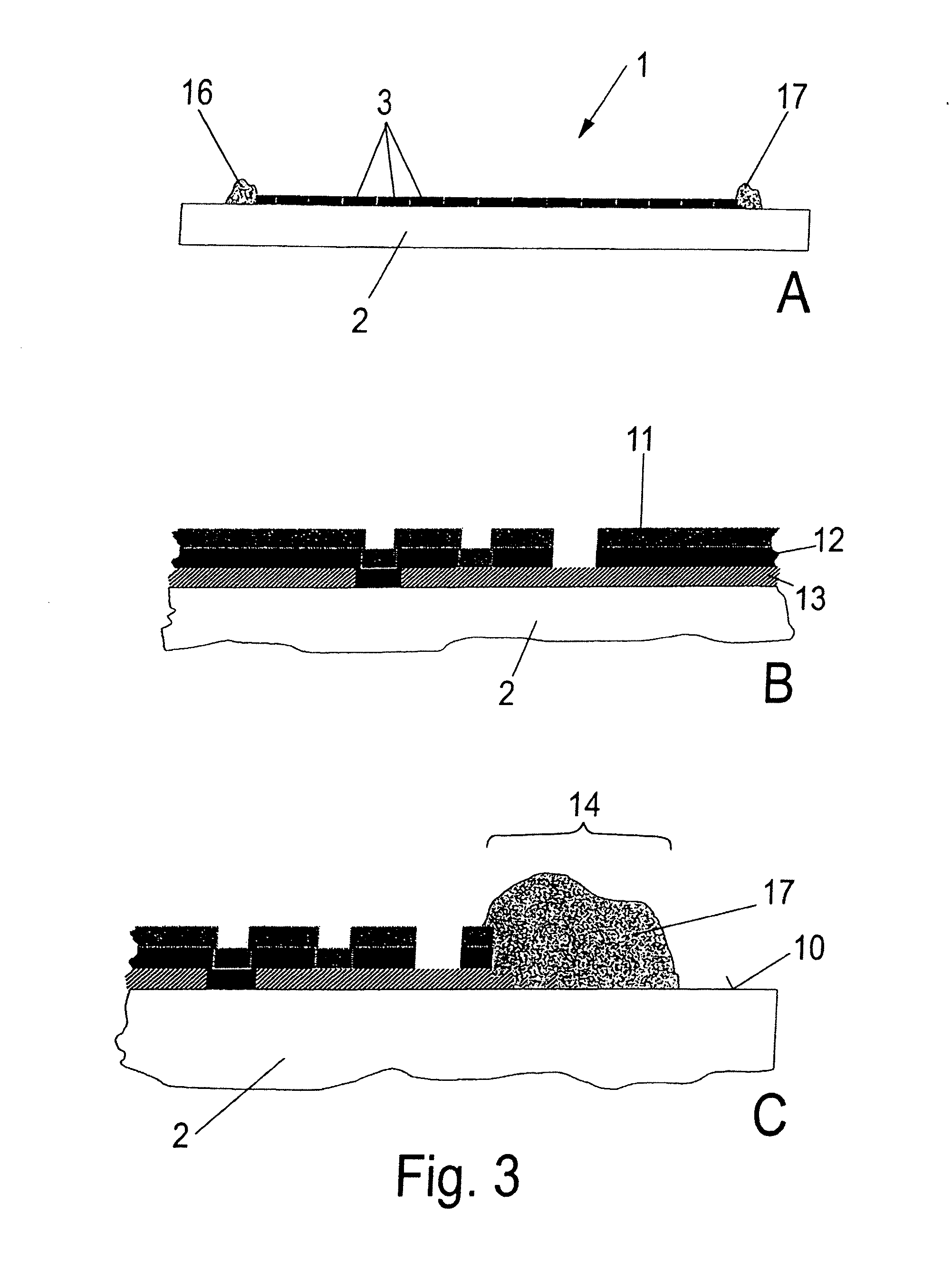Method for connecting thin-film solar cells and thin-film solar module
a solar cell and solar module technology, applied in the direction of photovoltaic energy generation, pressure inorganic powder coating, photovoltaic energy generation, etc., can solve the problems of not all materials can be soldered conventionally, increase assembly expenditure, and unsatisfactory resistance of adhesive to moisture and higher temperatures, so as to reduce manufacturing costs, avoid short circuits, and simplify manufacturing processes
- Summary
- Abstract
- Description
- Claims
- Application Information
AI Technical Summary
Benefits of technology
Problems solved by technology
Method used
Image
Examples
Embodiment Construction
the substrate approach, optical transparency of the support material can be dispensed with since the support is located in the beam path after the functional layers.
[0053]Instead of only one junction box, it is within the scope of the present disclosure to use two such boxes. Then, no current paths are required.
BRIEF DESCRIPTION OF THE DRAWINGS
[0054]FIG. 1 shows a plan view of a known thin-film solar module.
[0055]FIGS. 2A and 2B show a known thin-film solar cell in cutaway and enlarged view in an edge region.
[0056]FIG. 3A shows a schematic sectional view of a thin-film solar module provided with cold-gas sprayed current collecting paths, according to the present disclosure.
[0057]FIG. 3B shows a sectional view of a thin-film solar module in a known state of process before a cold gas spraying step shown in FIG. 3C according to the present disclosure.
[0058]FIG. 3C shows a sectional view of an edge region of a thin-film solar module provided with a cold-gas sprayed current collecting pa...
PUM
| Property | Measurement | Unit |
|---|---|---|
| Grain size | aaaaa | aaaaa |
| Temperature | aaaaa | aaaaa |
| Temperature | aaaaa | aaaaa |
Abstract
Description
Claims
Application Information
 Login to View More
Login to View More - R&D
- Intellectual Property
- Life Sciences
- Materials
- Tech Scout
- Unparalleled Data Quality
- Higher Quality Content
- 60% Fewer Hallucinations
Browse by: Latest US Patents, China's latest patents, Technical Efficacy Thesaurus, Application Domain, Technology Topic, Popular Technical Reports.
© 2025 PatSnap. All rights reserved.Legal|Privacy policy|Modern Slavery Act Transparency Statement|Sitemap|About US| Contact US: help@patsnap.com



